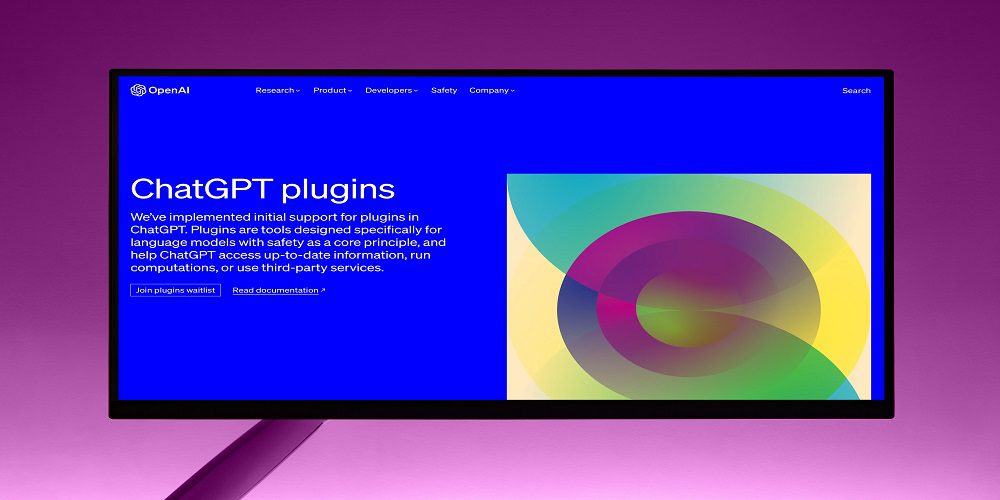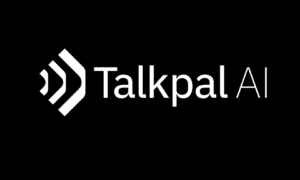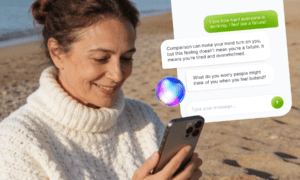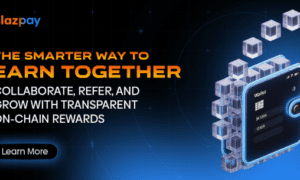Welcome to the future of conversational AI! OpenAI’s groundbreaking language model, ChatGPT, has taken the world by storm with its ability to effortlessly engage in intelligent and captivating conversations. Have you ever wondered how it works its magic? Look no further! In this blog post, we will demystify ChatGPT and delve into the depths of this revolutionary technology that is shaping the way we interact with machines. Prepare to be amazed as we unravel the secrets behind how ChatGPT empowers businesses, enhances customer experiences, and revolutionizes the field of artificial intelligence. Whether you’re a tech enthusiast or simply curious about cutting-edge advancements in language models, join us on this enlightening journey as we uncover all there is to know about OpenAI’s outstanding creation – ChatGPT. Let’s dive in.
Introduction to ChatGPT and OpenAI
ChatGPT (Generative Pre-trained Transformer) is a state-of-the-art conversational artificial intelligence (AI) model developed by OpenAI, one of the leading AI research companies in the world. It is built on top of the popular transformer architecture, which enables it to process large amounts of text data and generate human-like responses.
OpenAI’s mission is to develop friendly AI that benefits humanity. They believe that artificial intelligence has the potential to greatly benefit society, but also recognize its potential harmful effects if not carefully managed. As part of this mission, they have released several groundbreaking models and tools, including ChatGPT.
ChatGPT was first introduced in 2019 as GPT-2 – a large-scale language model trained on 1.5 billion parameters using an unsupervised learning approach. This means that the model learns from vast amounts of data without explicit instructions or guidance from humans.
In June 2020, OpenAI released an even more advanced version called GPT-3 with over 175 billion parameters – making it one of the largest language models ever created. This breakthrough model has garnered immense attention from both AI experts and the general public due to its impressive capabilities and potential applications.
But what makes ChatGPT and OpenAI’s approach so revolutionary? Let’s take a closer look at some key features of this cutting-edge technology.
Unsupervised Learning and Self-Attention Mechanisms
As mentioned earlier, ChatGPT is trained using an unsupervised learning approach, which means it can process large amounts of text data without any human-labeled annotations. This is a crucial feature that separates it from traditional language models, which require extensive hand-crafted rules and supervised training.
ChatGPT also utilizes self-attention mechanisms, which allow it to focus on different parts of the input text and capture complex relationships between words. This enables the model to generate more coherent and contextually relevant responses, improving its performance in conversational tasks.
Natural Language Processing (NLP) Capabilities
OpenAI’s ChatGPT has impressive natural language processing capabilities that make it stand out from other AI models. It can understand and generate text in multiple languages, including English, Spanish, French, German, Italian, Dutch, and more.
Furthermore, ChatGPT can perform a variety of NLP tasks such as machine translation, question-answering, summarization, and sentiment analysis – all without the need for additional fine-tuning or training.
Innovative Use Cases
The potential use cases for ChatGPT are endless. As a conversational AI model, it can be used in chatbots for customer service or personal assistants like Siri or Alexa.
Understanding Language Models: What is ChatGPT?
ChatGPT, also known as “Conversational Generative Pre-trained Transformer,” is a state-of-the-art language model developed by OpenAI. It has gained significant attention for its ability to generate human-like text and hold coherent conversations with users. In this section, we will delve deeper into understanding what exactly ChatGPT is and how it works.
At its core, ChatGPT is a neural network-based language model that uses machine learning algorithms to understand and generate text. It uses a technique called “deep learning” where it processes large amounts of data in order to learn patterns and relationships between words, phrases, and sentences. This allows the model to generate responses that are relevant and appropriate in the context of conversation.
One of the most remarkable features of ChatGPT is its ability to mimic human-like responses. This is due to its pre-training on a vast amount of data from various sources such as books, articles, websites, and even social media conversations. As a result, the model has developed an understanding of how humans use language in different contexts.
OpenAI designed ChatGPT primarily for NLP (natural language processing) tasks such as text completion or translation. However, it can also be used for conversational AI purposes due to its remarkable abilities in generating coherent responses.
How ChatGPT Works: Breaking Down the Technology
The technology behind ChatGPT is what makes it such a groundbreaking and innovative tool for conversational AI. Developed by OpenAI, the powerful language model uses state-of-the-art deep learning techniques to generate human-like responses in natural language conversations.
At its core, ChatGPT is built upon a deep neural network architecture known as Transformer. This type of model has gained popularity in recent years due to its ability to process large amounts of text data and capture complex relationships between words.
But what sets ChatGPT apart from other chatbots is its use of unsupervised learning. Unlike traditional chatbots that are pre-programmed with a set of rules and responses, ChatGPT learns through exposure to vast amounts of data from the internet. This allows it to adapt and improve its responses over time, making it more conversational and human-like with each conversation.
The key component of ChatGPT’s technology is the use of GPT-3 (Generative Pre-trained Transformer), which contains 175 billion parameters – making it one of the largest language models ever created. These parameters act as virtual “memories” that store knowledge about the English language, allowing for a wide range of responses while maintaining grammatical accuracy.
Additionally, GPT-3 also utilizes attention mechanisms, which enable it to focus on specific parts of a sentence or context when generating a response. This helps ensure coherence and relevance in its replies, leading to more natural-sounding conversations.
Advantages of ChatGPT in Conversational AI
ChatGPT, or Generative Pre-trained Transformer, is a state-of-the-art language model developed by OpenAI and widely used in various natural language processing applications. In recent years, this advanced technology has gained significant attention in the field of conversational AI and has shown impressive results in creating engaging and realistic conversations with users.
In this section, we will delve into the advantages of ChatGPT in conversational AI and how it revolutionizes the way machines interact with humans.
1. High-Quality Conversations: One of the main advantages of using ChatGPT in conversational AI is its ability to generate high-quality conversations that are indistinguishable from human ones. This is due to its massive training on a large dataset consisting of millions of web pages, books, articles, and other sources. As a result, ChatGPT can understand context better and produce relevant responses without sounding robotic or scripted.
2. Extensive Knowledge Base: Another major benefit of using ChatGPT is its extensive knowledge base. It contains information on almost every topic imaginable, allowing it to provide accurate responses to user queries covering various domains. This makes it an ideal choice for chatbots used in customer service or support as they need to handle different types of questions from customers effectively.
3. Training Flexibility: Unlike traditional chatbot models that require specific training on the data related to their designated task or domain, ChatGPT offers more flexibility as it is pre-trained on a broad range of topics. This means developers don’t need to spend time and resources on training the model from scratch, making it a more efficient and cost-effective option.
4. Personalization: ChatGPT has the ability to personalize conversations based on individual user preferences. As it learns from each interaction, it can adapt its responses to match the user’s tone, style, and topic of conversation. This feature helps create a more natural and personalized experience for users, making them feel like they are speaking to a real human.
5. Multilingual Capabilities: Another significant advantage of ChatGPT is its multilingual capabilities. It can converse in multiple languages with equal proficiency, making it an attractive choice for businesses with global operations or customers from different linguistic backgrounds.
6. Contextual Understanding: ChatGPT excels in understanding context, which is crucial in maintaining natural and meaningful conversations with users. Unlike traditional chatbots that follow predetermined rules or commands, ChatGPT can understand the subtleties of language and consider previous interactions to generate relevant responses.
Use Cases for ChatGPT: Real-Life Applications
ChatGPT, OpenAI’s revolutionary language model, has the potential to transform various industries and real-life scenarios by improving conversational AI. In this section, we will discuss some use cases for ChatGPT and how it can be applied in real-life applications.
1) Customer Service: One of the most common use cases for ChatGPT is in customer service. With its advanced natural language processing capabilities, ChatGPT can understand customer queries and provide accurate responses in a human-like manner. This not only enhances the overall customer experience but also reduces the workload on human agents, allowing them to focus on more complex issues.
2) Virtual Assistants: Virtual assistants such as Siri, Alexa, and Google Assistant have become an integral part of our daily lives. However, these assistants often struggle with complex or multiple-step commands. With ChatGPT’s conversational abilities and contextual understanding, virtual assistants can now handle more complex tasks and provide personalized responses based on individual preferences.
3) Education: ChatGPT can also be used in educational settings to help students with their assignments or research projects. It can assist students by answering questions related to a particular topic or providing relevant information from credible sources. This allows students to learn at their own pace without feeling overwhelmed with too much information.
Challenges and Limitations of ChatGPT
ChatGPT, like any other AI technology, has its own set of challenges and limitations. Although it is an incredibly powerful tool for conversational AI, there are still certain areas where it falls short. In this section, we will discuss the major challenges and limitations faced by ChatGPT.
1. Bias in Training Data
One of the biggest challenges with AI language models such as ChatGPT is the issue of bias in training data. These models learn from large datasets that are created by humans, which means they can inherit biases present in the data. This can lead to biased responses or reinforce existing societal biases when interacting with users. For example, if a training dataset contains more conversations between men than women, the model might have a better understanding of male-oriented topics and struggle with conversations about female-oriented topics.
2. Limited Conversational Ability
Another limitation of ChatGPT is its limited ability to understand context and hold long-term conversations. Since it learns from text inputs without any additional information or context, it may not be able to maintain coherence in conversations spanning multiple turns or tackle complex topics effectively. This makes it less suitable for tasks that require deep understanding and reasoning abilities.
3. Lack of Emotional Intelligence
While ChatGPT excels at generating human-like text responses based on input data, it lacks emotional intelligence. It cannot perceive emotions or express empathy, which can impact its ability to engage in emotionally charged conversations or provide appropriate responses during such interactions.
4. Difficulty in Learning New Skills
ChatGPT is trained on a specific dataset and has a predetermined set of skills it can perform. Adding new skills or expanding its knowledge base requires re-training with additional data, which can be time-consuming and expensive.
5. Vulnerability to Adversarial Attacks
Like other deep learning models, ChatGPT is vulnerable to adversarial attacks, where malicious inputs can cause the model to generate inappropriate or offensive responses. This poses ethical concerns as it can potentially lead to harm when used in real-world applications.
6. High Computing Resources
Training and deploying ChatGPT models require significant computing resources, including large amounts of memory and processing power. This makes it challenging for smaller organizations or individuals with limited resources to utilize this technology effectively.
The Future of Conversational AI with ChatGPT
The future of conversational AI is constantly evolving and advancing, with new technologies and applications being developed every day. One particularly remarkable development in this field is ChatGPT, an open-source language model created by OpenAI. This innovative tool has revolutionized the way we interact with machines and has opened up a world of possibilities for conversational AI.
ChatGPT stands for “Conversational Generative Pre-trained Transformer” and it uses deep learning techniques to generate human-like responses to user inputs. The model was trained on a massive dataset of over 8 million text documents from the internet, making it highly versatile and capable of understanding different contexts and nuances in language usage.
One of the most exciting applications of ChatGPT is in chatbots, which are computer programs designed to simulate conversation with human users. With the help of ChatGPT, chatbots can now provide much more personalized and natural responses than ever before. This means that they can offer better customer support services, engage in more meaningful conversations, and even assist with tasks such as scheduling appointments or placing orders online.
Another area where ChatGPT shows great potential is virtual assistants. These are programs that use artificial intelligence (AI) to perform various tasks based on voice commands or text inputs from users. By incorporating ChatGPT into virtual assistants, they can become more human-like in their interactions with users, making them easier to use and more relatable.
Conclusion: The Impact of ChatGPT on the Future of Communication
ChatGPT is a powerful language model developed by OpenAI that uses artificial intelligence and natural language processing to generate human-like text responses in conversation. As we have explored in this blog, ChatGPT has significant implications for the field of conversational AI.
One of the most noteworthy impacts of ChatGPT is its potential to revolutionize how we communicate with machines. Traditionally, chatbots have always been limited to pre-programmed responses and scripted conversations. However, with the introduction of ChatGPT, these limitations are being challenged.
The ability for a machine to generate human-like text responses opens up endless possibilities for improving communication between humans and machines. For example, customer service departments can use ChatGPT-powered chatbots to provide more personalized and efficient support to their customers. This not only improves customer satisfaction but also reduces costs associated with hiring and training human representatives.
Moreover, as language models like ChatGPT continue to improve and develop, they could potentially replace human agents in many industries such as call centers or even journalism where automated content creation is already being adopted. This could lead to massive changes in the workforce landscape as new jobs are created while others may become obsolete.
Another significant impact of ChatGPT on the future of communication lies in its potential applications in education. With its ability to understand complex contexts and generate appropriate responses, ChatGPT can be used as a virtual tutor or study partner for students.

































